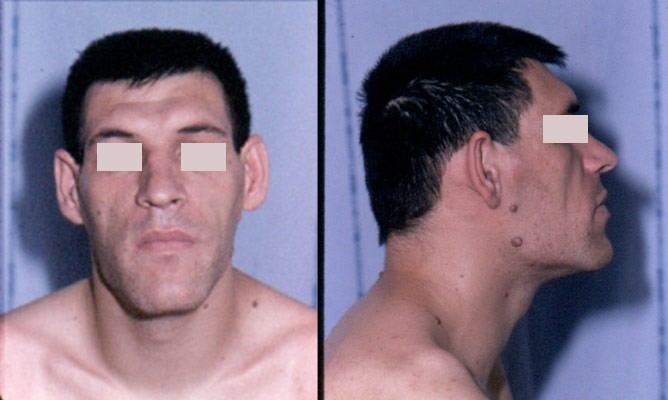 | ||
Skull bossing is the protuberance of various bones of the skull which most often occurs in the frontal bones beneath the forehead. Skull bossing may be due to a variety of medical conditions such as when a decrease in bone marrow volume leads to depressed intramedullary hematopoiesis.
Contents
Frontal bossing
Frontal bossing is the development of an unusually pronounced forehead which may also be associated with a heavier than normal brow ridge. It is caused by enlargement of the frontal bone, often in conjunction with abnormal enlargement of other facial bones, the skull, the mandible and bones in the hands and feet. Frontal bossing is usually seen in a few rare medical syndromes such as acromegaly - a chronic medical disorder in which the anterior pituitary gland produces excess growth hormone (GH).
